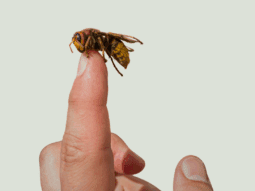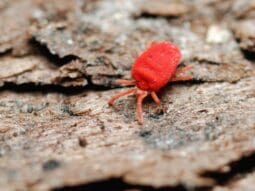
Looking for effective mosquito control that doesn't harm the environment? You're not alone. Many homeowners are discovering that eco-friendly mosquito solutions can be just as powerful as their chemical counterparts, while keeping families, pets, and beneficial pollinators safe.
Today's natural mosquito control options utilize innovative organic techniques that work remarkably well. From essential oil-based sprays containing rosemary, peppermint, and citronella to specialized mosquito traps and buckets, these environmentally conscious alternatives provide excellent protection without synthetic chemicals. Best of all, most natural treatments allow you to return to your yard in as little as 30 minutes after application.
Understanding Eco-Friendly Mosquito Control
Eco-friendly mosquito control uses organic ingredients and natural methods to repel mosquitoes without harming the environment. These solutions protect your family and pets while preserving beneficial insects like bees and butterflies. Unlike conventional pesticides that contain synthetic chemicals, eco-friendly options utilize plant-based ingredients and biological controls.
Natural mosquito control typically incorporates three main approaches: prevention, repellents, and targeted elimination. Prevention focuses on eliminating standing water where mosquitoes breed, repellents use natural compounds to keep mosquitoes away, and targeted elimination employs specific methods to reduce mosquito populations without affecting other species.
The most effective eco-friendly mosquito control systems combine multiple strategies for comprehensive protection. For example, using mosquito buckets with organic larvicides alongside essential oil-based perimeter sprays creates a dual barrier against both adult mosquitoes and their larvae. These integrated approaches provide 14-21 days of protection between applications, depending on weather conditions and mosquito pressure.
Many eco-friendly solutions contain powerful plant oils like rosemary, peppermint, lemongrass, geraniol, and citronella. These natural ingredients effectively repel mosquitoes by interfering with their sensory receptors, making your property less attractive to these pests. Additionally, products containing BTI (Bacillus thuringiensis israelensis), a naturally occurring bacteria, specifically target mosquito larvae in standing water without harming other aquatic life.
When selecting an eco-friendly mosquito control service, look for companies that offer customized approaches based on your property's specific needs. The most reputable providers conduct thorough property assessments to identify mosquito breeding grounds and recommend tailored solutions that address your unique situation while maintaining environmental responsibility.
Mosquito Season in Texas, Oklahoma, Mississippi and Louisiana
The mosquito season across Texas, Oklahoma, Mississippi, and Louisiana typically runs from March through October, with peak activity occurring during the hot, humid summer months. These Gulf Coast states experience longer mosquito seasons compared to northern regions due to their warm climate and high humidity levels.
In Texas, mosquitoes begin emerging as early as February in southern areas like Houston and the Rio Grande Valley, while northern cities like Dallas may see activity starting in March. The Texas mosquito season intensifies in May and continues strongly through September, with some activity persisting into November in coastal areas.
Oklahoma's mosquito season generally starts in April, reaching its peak in July and August when temperatures consistently exceed 80°F. The southeastern regions of Oklahoma, bordering Texas and Arkansas, typically experience higher mosquito populations due to greater rainfall and humidity.
Mississippi and Louisiana face particularly challenging mosquito conditions due to their abundant wetlands, bayous, and high annual rainfall. In these states, mosquito activity begins in March, peaks from June through August, and can extend into October. Coastal areas of Louisiana may experience active mosquitoes nearly year-round, with only brief respites during cooler winter months.
Rainfall patterns significantly impact mosquito populations across these four states. Heavy spring rains create ideal breeding conditions, often leading to population explosions 7-10 days after major precipitation events. Summer thunderstorms and tropical weather systems can trigger additional breeding cycles throughout the season.
The CDC reports these southern states consistently rank among the highest for mosquito-borne disease cases, including West Nile virus, with Texas recording 434 cases in a recent year. Using eco-friendly mosquito control becomes particularly important in these regions where prolonged seasons require multiple treatment applications.
For effective protection in these states, eco-friendly mosquito treatments typically require application every 14-21 days throughout the season. Natural treatments break down more quickly than synthetic options, especially during periods of heavy rain or extreme heat common to the Gulf Coast region.
Why Traditional Mosquito Control Methods Can Harm the Environment
Traditional mosquito control methods often rely on synthetic chemicals that pose significant environmental risks. These conventional approaches, while effective at killing mosquitoes, create unintended consequences that impact our ecosystem in several ways.
Chemical Runoff Contaminates Water Sources
Chemical pesticides used in traditional mosquito control don't stay put. Rain washes these toxins into storm drains, streams, and eventually larger bodies of water. This runoff contaminates aquatic ecosystems, affecting fish, amphibians, and other water-dwelling organisms. Studies show that common synthetic mosquito control chemicals can remain in water systems for months, creating lasting environmental damage.
Harm to Beneficial Insects and Pollinators
Traditional mosquito sprays don't discriminate between harmful and helpful insects. These broad-spectrum insecticides kill bees, butterflies, ladybugs, and other beneficial insects alongside mosquitoes. Pollinators like bees are especially vulnerable, with research indicating that exposure to common mosquito control chemicals reduces bee colony health and foraging ability. This impact on pollinators threatens plant pollination, affecting food production and natural plant communities.
Disruption of Natural Food Chains
Synthetic pesticides create ripple effects throughout the ecosystem. When beneficial insects die from pesticide exposure, the animals that feed on them—birds, bats, and small mammals—lose critical food sources. This disruption extends up the food chain, affecting predator populations and overall ecosystem balance. For example, birds that eat insecticide-contaminated insects may experience reduced reproductive success or neurological problems.
Development of Pesticide Resistance
Continuous use of the same chemical controls leads to pesticide resistance in mosquito populations. This resistance develops as mosquitoes with natural genetic protection survive treatments and pass these traits to offspring. Over time, stronger and more toxic chemicals become necessary to achieve the same control effect, creating a dangerous cycle of increasing environmental toxicity.
Residual Toxicity in Soil
Traditional mosquito control chemicals linger in soil, affecting soil health and the microorganisms that maintain it. These residual chemicals can persist for weeks or months, depending on the specific product. Soil contamination impacts plant growth and health, potentially reducing garden productivity and affecting the entire backyard ecosystem.
Natural Mosquito Prevention Strategies
Eco-friendly mosquito control starts with prevention techniques that interrupt the mosquito lifecycle naturally. These strategies focus on habitat modification and creating inhospitable environments for mosquitoes without relying on chemical solutions.
Eliminating Standing Water
Standing water elimination removes mosquito breeding grounds from your property. Mosquitoes only need about a quarter inch of water to lay hundreds of eggs, making regular inspection crucial. Empty bird baths, plant saucers, and children's toys at least weekly. Clean gutters regularly to prevent water accumulation, and fill tree holes with expandable foam. For permanent water features like ponds, add mosquito-eating fish species such as gambusia (mosquitofish) or use BTI (Bacillus thuringiensis israelensis) dunks—a natural bacteria that specifically targets mosquito larvae without harming other wildlife. Remember to check for hidden water collection points after rain, such as tarp folds, forgotten containers, and clogged drainage areas.
Creating Barriers and Physical Deterrents
Physical barriers provide effective protection against mosquitoes without chemicals. Install fine mesh screens (16-18 mesh) on windows and doors to prevent mosquito entry while maintaining airflow. Use mosquito netting around outdoor seating areas, gazebos, and beds for protection during peak activity times. Strategic landscaping creates natural mosquito barriers—plant mosquito-repelling vegetation like citronella, lavender, marigolds, and catnip around the perimeter of outdoor spaces and near windows. Install ceiling fans on porches and patios, as mosquitoes struggle to fly in winds over 1 mph. For water features, consider surface agitators or fountains since mosquitoes prefer laying eggs in still water. Strategically positioned bat houses attract these natural predators—a single bat consumes up to 1,000 mosquitoes nightly.
Plant-Based Mosquito Repellents
Plant-based mosquito repellents harness nature's defense mechanisms to create protective barriers around your outdoor spaces. These natural alternatives effectively deter mosquitoes while enhancing your landscape's beauty and fragrance.
Mosquito-Repellent Plants for Your Garden
Strategic placement of mosquito-repellent plants creates natural barriers that reduce mosquito presence in your outdoor living areas. These plants release aromatic compounds that mask human scents and confuse mosquitoes' sensory receptors:
- Citronella Grass: Famous for its use in mosquito-repellent candles, this tall clumping grass releases a distinctive aroma that masks other scents mosquitoes use to locate targets. It thrives in full sun and well-drained soil, adding tropical flair to your landscape.
- Lavender: Contains essential oils unappealing to mosquitoes. Plant lavender along borders of outdoor seating areas or pathways to enjoy its aromatic and protective benefits. Its purple blooms add visual appeal while its hardiness makes it low-maintenance.
- Marigolds: These vibrant orange and yellow flowers contain pyrethrum—a compound used in commercial insect repellents. Plant marigolds around your garden's perimeter or near entryways to reduce mosquito presence while adding bright color.
- Basil: Beyond culinary uses, basil emits a strong scent mosquitoes find particularly off-putting. The volatile oils in basil leaves, especially when bruised or crushed, release aromatics that naturally deter these insects.
- Lemongrass: Contains citronella oil and provides similar benefits to citronella grass with a more culinary focus. Its lemony fragrance repels mosquitoes while offering versatility in cooking.
- Additional Effective Plants: Mint, rosemary, geranium, eucalyptus, catmint, petunia, and nasturtium also demonstrate mosquito-repelling properties while enhancing garden aesthetics.
Pro Tip: Place these plants near patios, entryways, or sitting areas to maximize their effectiveness during outdoor gatherings. For best results, occasionally brush or gently crush leaves to release more of their natural oils.
Essential Oil Solutions
Essential oils derived from mosquito-repellent plants offer concentrated protection in spray or diffused form. These natural compounds provide eco-friendly alternatives to chemical repellents:
- Lemongrass Oil: Contains citronella and creates a powerful barrier against mosquitoes when diluted and sprayed around outdoor spaces.
- Peppermint Oil: Delivers a refreshing scent humans enjoy while repelling mosquitoes. Its cooling sensation also helps relieve itching from existing bites.
- Rosemary Oil: Functions as both a culinary herb and effective mosquito deterrent. When extracted as an oil, its potent aroma disrupts mosquitoes' sensory perception.
- Geraniol: A natural compound found in geraniums and roses that effectively repels mosquitoes when concentrated in spray form.
- Citronella Oil: The classic mosquito repellent oil, extracted from citronella grass, masks human scents and confuses mosquitoes' tracking abilities.
Application methods include diluting these oils with water to create low-dose sprays for yard treatments or combining them with carrier oils for personal use. When professionally applied, these essential oil-based treatments dry within 30 minutes, allowing your family and pets to safely return to treated areas quickly while maintaining effective protection.
For maximum effectiveness, combine essential oil treatments with other eco-friendly control methods like mosquito traps and standing water elimination. This integrated approach provides comprehensive protection without harmful environmental impacts.
Biological Control Methods
Biological control methods harness nature's own predator-prey relationships to manage mosquito populations effectively. These eco-friendly approaches introduce natural mosquito enemies into your environment, creating sustainable pest management systems that require minimal intervention once established.
Beneficial Predators: Bats, Dragonflies, and Fish
Natural predators form the foundation of biological mosquito control by targeting different stages of the mosquito lifecycle. A single bat consumes up to 1,000 mosquitoes per hour, making them exceptional allies in mosquito management. Installing bat houses in your yard attracts these nocturnal hunters, providing long-term mosquito control while supporting declining bat populations. Dragonflies, often called "mosquito hawks," eat both adult mosquitoes and larvae, with each dragonfly consuming hundreds of mosquitoes daily. Creating dragonfly-friendly habitats with native plants around water features encourages these beneficial insects to patrol your property. For water features and ponds, mosquitofish (Gambusia affinis) and guppies actively feed on mosquito larvae, preventing development before mosquitoes can reach adulthood. These fish consume up to 100-500 mosquito larvae daily, making them highly effective for controlling breeding sites in standing water.
Biological Larvicides
Biological larvicides target mosquitoes during their vulnerable aquatic stages without harming beneficial organisms. BTI (Bacillus thuringiensis israelensis), a naturally occurring bacteria, produces proteins toxic only to mosquito larvae when ingested. Available in granules, dunks, and liquid forms, BTI applications in standing water kill mosquito larvae within 24 hours while remaining completely safe for people, pets, and beneficial insects like bees and butterflies. BTI treatments remain effective for 14-30 days, depending on environmental conditions, making them ideal for treating rain barrels, ponds, and other water features. Another effective option, Spinosad, derived from soil bacteria, disrupts mosquito nervous systems while maintaining low toxicity for non-target organisms. These targeted treatments break the mosquito lifecycle at its source, offering powerful control with minimal environmental impact compared to broad-spectrum chemical insecticides.
Sustainable Landscape Management for Mosquito Control
Sustainable landscape management creates an environment that naturally deters mosquitoes while supporting beneficial ecosystems. These strategic approaches disrupt mosquito breeding cycles and create barriers that protect your outdoor spaces without harmful chemicals.
Water Features and Pond Maintenance
Water features enhance your landscape but require proper management to prevent mosquito breeding. Mosquitoes lay eggs in stagnant water, completing their lifecycle in 7-10 days, making continuous water movement essential for prevention. Introduce natural predators like goldfish, koi, or guppies to your pond—these fish consume hundreds of mosquito larvae daily, providing effective biological control.
Install water movement features such as fountains, waterfalls, or pumps to create constant surface agitation. Moving water prevents mosquitoes from landing on the surface to lay eggs, breaking their reproductive cycle naturally. Perform regular maintenance by removing excess algae and weeds weekly, as these provide shelter and nutrients for mosquito larvae.
Consider adding biological controls like Bacillus thuringiensis israelensis (BTI) to standing water features. BTI targets mosquito larvae specifically without harming other aquatic life, fish, or plants, making it an environmentally responsible choice for mosquito management in ornamental ponds and water gardens.
Strategic Planting for Mosquito Reduction
Strategic planting creates natural mosquito barriers around your property through plants that emit compounds repelling these pests. Citronella grass releases a strong lemony scent that masks human odors, confusing mosquitoes' hunting abilities. Lavender contains natural oils that mosquitoes find overwhelming, while marigolds contain pyrethrum—a compound used in many commercial insect repellents.
Position these mosquito-repelling plants strategically around high-traffic areas:
- Plant lavender and citronella near patios, decks, and outdoor seating
- Create borders of marigolds around property perimeters
- Place basil plants near doorways and windows
- Add lemongrass to container gardens near outdoor dining spaces
These plants provide dual benefits—enhancing landscape aesthetics while creating a natural defense system against mosquitoes. For maximum effectiveness, incorporate these plants into a comprehensive mosquito management approach that includes eliminating standing water and using other eco-friendly control methods.
When designing mosquito-resistant landscapes, consider your climate zone to ensure plants thrive. Well-maintained gardens with proper pruning improve air circulation, reducing humid microclimates where mosquitoes rest during daylight hours. Combining strategic planting with water feature management establishes a sustainable ecosystem that naturally limits mosquito populations without relying on chemical interventions.
DIY Natural Mosquito Repellent Recipes
Essential Oil Spray Repellents
Essential oil sprays offer powerful mosquito protection without harmful chemicals. Combine 10-15 drops each of citronella, lemongrass, and eucalyptus oils with 2 cups of water and 1 tablespoon of alcohol in a spray bottle for an effective repellent. For enhanced protection, add 10 drops of tea tree oil which contains terpenes that mask human scents mosquitoes typically target. Apply this mixture to exposed skin or spray around outdoor seating areas every 2-3 hours during peak mosquito activity.
Herbal Repellent Infusions
Herbal infusions create longer-lasting repellent effects by extracting natural oils from fresh plants. Steep 1 cup of crushed rosemary, mint, and lavender leaves in 4 cups of boiling water for 30 minutes. Strain the mixture, let it cool, and transfer to spray bottles for use around your home. These infusions work effectively for up to 5 days when refrigerated and provide a pleasant fragrance while deterring mosquitoes from outdoor spaces, patios, and entranceways.
Vinegar-Based Repellent Solutions
Apple cider vinegar creates an acidic environment mosquitoes avoid. Mix 1 cup of apple cider vinegar with ½ cup of fresh herbs like rosemary, sage, and thyme, then let it infuse for 2-3 weeks in a sealed container. Strain and combine equal parts of this infusion with water in a spray bottle. This solution remains effective for 6-8 weeks when stored in a cool, dark place and serves as an excellent perimeter treatment for your yard, particularly around seating areas.
Citrus Peel Repellents
Citrus peels contain d-limonene, a natural compound mosquitoes find repulsive. Boil the peels from 3-4 lemons, limes, or oranges in 2 cups of water for 5-7 minutes. Let the mixture cool, strain it, and pour into spray bottles. This citrus solution provides 4-6 hours of protection when applied to clothing or outdoor furniture cushions and emits a fresh scent while creating an invisible barrier against mosquitoes.
Garlic-Based Mosquito Deterrents
Garlic contains sulfur compounds that effectively repel multiple insect species. Blend 4-5 garlic cloves with 2 cups of water, strain the mixture, and add 1 tablespoon of mineral oil to help it stick to surfaces. Transfer to spray bottles and apply around your yard perimeter, focusing on damp, shaded areas where mosquitoes rest. This potent mixture provides protection for up to one week and penetrates dense vegetation where mosquitoes often hide during daylight hours.
When to Consider Professional Eco-Friendly Services Like Romex Pest Control
Persistent Mosquito Problems Despite DIY Efforts
DIY mosquito control measures sometimes fall short against severe infestations. If you've consistently applied natural repellents and eliminated standing water but still face persistent mosquito problems, it's time to consider professional services. Professional eco-friendly exterminators use concentrated formulations of essential oils like lemongrass, peppermint, rosemary, and garlic that provide more powerful protection than typical home remedies.
Large Properties or Complex Landscapes
Large properties with diverse landscaping features require comprehensive treatment plans. Professional eco-friendly services offer systematic approaches that address mosquito breeding grounds across extensive areas. These services conduct thorough property assessments to identify hidden water sources and high-risk zones, ensuring complete coverage of mosquito habitats in complex landscapes with multiple water features, dense vegetation, or wooded areas.
Special Events and Outdoor Gatherings
Special outdoor events deserve mosquito-free experiences for all guests. Professional eco-friendly treatments provide reliable protection for weddings, family reunions, or backyard parties. Treatments applied 2-3 days before your event create a protective barrier that repels mosquitoes throughout your gathering. The natural ingredients break down faster than synthetic options but still provide effective coverage during your event timeline.
Areas with High Mosquito-Borne Disease Risk
Regions with elevated risks of West Nile virus, Zika, or other mosquito-borne diseases benefit from professional management. Professional eco-friendly services like utilize powerful natural formulations that effectively reduce mosquito populations in high-risk areas. These services often incorporate BTI (Bacillus thuringiensis israelensis), a naturally occurring bacteria that specifically targets mosquito larvae while remaining safe for other organisms.
When You Need Quick Results
Professional eco-friendly treatments deliver rapid results when immediate relief is necessary. After application, most natural treatments allow you to return to your outdoor spaces within just 30 minutes, compared to longer wait times with traditional chemical treatments. Professional services create customized treatment schedules based on your local climate and mosquito activity patterns, providing consistent protection throughout the mosquito season.
Environmental Considerations
Professional eco-friendly services offer expertise in environmentally responsible pest management. These services follow Pesticide Environmental Stewardship Program guidelines to protect local ecosystems while effectively controlling mosquito populations. Their trained technicians understand how to apply treatments that preserve beneficial insects like bees and butterflies while specifically targeting mosquitoes, ticks, and fleas.
Time Constraints and Convenience
Professional services save valuable time through consistent, scheduled treatments. Instead of researching, mixing, and applying DIY solutions every few weeks, professional eco-friendly services handle the entire process. These services typically recommend treatment cycles every 14-21 days for optimal protection, as natural solutions break down more quickly than synthetic alternatives, especially during periods of heavy rain or extreme heat.
Integrated Pest Management Approach
Integrated Pest Management (IPM) combines multiple strategies to control mosquitoes effectively while minimizing environmental impact. This science-backed approach disrupts mosquitoes at every life stage, preventing infestations before they begin and creating long-term protection for your property.
Eliminating Breeding Sites
Mosquito elimination starts with removing their breeding grounds. A comprehensive property inspection identifies and eliminates standing water where mosquitoes reproduce. Even small amounts of water in plant saucers, clogged gutters, or children's toys provide perfect mosquito nurseries. Regular yard maintenance includes:
- Emptying containers that collect rainwater at least twice weekly
- Cleaning gutters to prevent water accumulation
- Filling in low areas where puddles form after rain
- Maintaining swimming pools with proper chlorination and filtration
- Refreshing bird baths and pet water bowls every 2-3 days
Physical Barriers
Creating physical obstacles prevents mosquitoes from entering your living spaces. These barriers form an essential component of eco-friendly mosquito management:
- Installing fine mesh screens (16-18 mesh) on windows and doors
- Using mosquito netting around outdoor seating areas and beds
- Deploying mosquito curtains on porches and patios
- Setting up fan systems in outdoor gathering spaces to disrupt mosquito flight
- Wearing light-colored, long-sleeved clothing when outdoors during peak activity times
Biological Control
Biological control introduces natural mosquito predators to reduce populations without chemicals. These natural solutions work continuously, providing 24/7 protection:
- Adding mosquitofish to ponds and water features (one fish per square foot of surface area)
- Installing bat houses to attract these nocturnal predators that consume up to 1,000 mosquitoes hourly
- Encouraging dragonfly populations near water sources
- Applying BTI (Bacillus thuringiensis israelensis) to standing water to kill larvae
- Introducing nematodes to soil where adult mosquitoes rest
Targeted Treatment
Eco-friendly mosquito control emphasizes precision application rather than broad-spectrum spraying. This targeted approach focuses treatments on mosquito resting and breeding sites:
- Applying barrier sprays to shrubs, plants, and foliage where mosquitoes rest
- Using essential oil-based repellents containing lemongrass, peppermint, rosemary, and garlic
- Treating vegetation around ponds and water features
- Placing mosquito traps in strategic locations to reduce populations
- Deploying mosquito buckets that are safe for pollinators, pets, and people
When properly implemented, this integrated approach creates a mosquito management system that's effective and environmentally responsible. Areas treated with natural products typically become usable again within 30 minutes after application, making them ideal for families with children and pets. By combining these strategies, you'll disrupt the mosquito lifecycle while preserving beneficial insects and protecting your outdoor living spaces.
Conclusion
Eco-friendly mosquito control represents a smart balance between effective protection and environmental responsibility. By embracing natural solutions you're not just safeguarding your family but also preserving beneficial insects and local ecosystems.
The combination of prevention techniques habitat modification biological controls and plant-based repellents creates a comprehensive defense system against mosquitoes without harmful chemical residues. Whether you choose DIY methods or professional services like Romex Pest Control the key is consistency throughout mosquito season.
Taking an integrated approach to mosquito management allows you to enjoy your outdoor spaces while being a responsible steward of the environment. With these sustainable practices you'll experience fewer mosquitoes today while helping protect our natural world for tomorrow.
Frequently Asked Questions
What are eco-friendly mosquito control methods?
Eco-friendly mosquito control methods include essential oil-based sprays, specialized traps, and biological controls that target mosquitoes without harming beneficial insects. These methods use natural ingredients like plant oils that disrupt mosquito sensory receptors and organic larvicides such as BTI that specifically target mosquito larvae in standing water. These solutions are safe for families, pets, and the environment.
How long is mosquito season in Gulf Coast states?
Mosquito season in Texas, Oklahoma, Mississippi, and Louisiana typically runs from March through October, with peak activity during hot, humid summer months. Southern Texas may see mosquito activity as early as February, while Oklahoma's season starts in April. These Gulf Coast states experience longer mosquito seasons due to warm climate and high humidity levels, with population surges following heavy spring rains.
Why should I avoid traditional chemical mosquito control?
Traditional chemical mosquito control creates environmental hazards through water contamination, harm to beneficial insects like bees and butterflies, and disruption of natural food chains. These broad-spectrum insecticides can lead to pesticide resistance, requiring increasingly toxic chemicals over time. Chemical residue in soil affects soil health and plant growth, creating long-term ecological damage.
How can I naturally prevent mosquitoes in my yard?
Eliminate standing water by emptying bird baths, cleaning gutters, and checking for water collection points. Create physical barriers with fine mesh screens on windows and doors. Plant mosquito-repelling plants like citronella grass, lavender, and marigolds around your outdoor spaces. Introduce natural predators such as bats and dragonflies, and install water agitators in ponds to prevent breeding.
Which plants help repel mosquitoes naturally?
Effective mosquito-repelling plants include citronella grass, lavender, marigolds, basil, and lemongrass. These plants release aromatic compounds that confuse mosquitoes' sensory receptors, creating natural barriers around outdoor spaces. Planting these strategically around patios, decks, and entryways enhances both your landscape's beauty and its mosquito protection capabilities.
How do biological control methods work against mosquitoes?
Biological control methods use natural predator-prey relationships to manage mosquito populations. Bats can consume up to 1,000 mosquitoes per hour, while dragonflies and mosquitofish target mosquito larvae in water sources. Biological larvicides like BTI and Spinosad specifically kill mosquito larvae without harming beneficial organisms, offering effective control with minimal environmental impact.
Can I make my own natural mosquito repellent?
Yes, you can create effective DIY mosquito repellents using essential oils like citronella, lemongrass, and eucalyptus mixed with witch hazel and water in a spray bottle. Other options include herbal infusions with mint and rosemary, vinegar-based solutions, citrus peel repellents, and garlic-based deterrents. These homemade solutions are chemical-free and often have pleasant scents.
When should I consider professional eco-friendly mosquito services?
Consider professional services when facing persistent mosquito problems despite DIY efforts, managing large properties with complex landscapes, planning special events, living in areas with high mosquito-borne disease risks, or needing quick results. Professional services use concentrated natural formulations and create systematic treatment plans tailored to your specific property needs.
How often should eco-friendly mosquito treatments be applied?
Eco-friendly mosquito treatments typically require application every 14-21 days throughout the mosquito season. Natural solutions break down more quickly than synthetic options, especially during heavy rain or extreme heat. This regular treatment schedule ensures continuous protection while maintaining environmental safety.
What is Integrated Pest Management for mosquito control?
Integrated Pest Management (IPM) combines multiple strategies for effective mosquito control with minimal environmental impact. It includes eliminating breeding sites through property maintenance, creating physical barriers like screens, introducing natural predators, and applying targeted eco-friendly treatments. This comprehensive approach ensures effective mosquito management while preserving beneficial insects and ecosystem health.
We hope you enjoy these informational articles. If you'd like to learn more about our eco-friendly pest control services, call (844) 955-2447.
Read More
Your Path to a Pest-Free Home or Business
Romex Pest Control
We are committed to protecting you, your children, and your pets with our eco-friendly, child-friendly, and pet-friendly guaranteed pest control solutions.
Romex Pest Control is fully insured and licensed in Texas, Oklahoma, Louisiana, and Mississippi.
Service Areas:
Hours
M-F 8 am–5 pm
Sat 8 am–2 pm
Sun Closed
Established 2016 © Copyright 2025 Romex Pest Control










